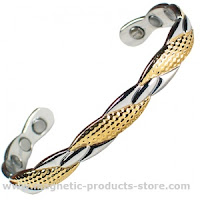This is fine if you are indoors, looking out of the window. But if you are out and about, it can be a problem - especially if you suffer from arthritis. Chronic arthritis, and osteoarthritis in particular, is enough of a problem at the best of times. But bad weather makes it worse.
I have to add a caveat here that not everyone in the medical community accepts this opinion. An article in the Mail Online a few years ago quoted one Professor Philip Conaghan, professor of musculoskeletal medicine at the University of Leeds to the effect that:
Scientific trials have failed to prove this. There is no evidence to show weather or climate has any effect on arthritis. OA occurs all over the world, in all types of climates.'
Changes in temperature or barometric pressure, a measure that refers to the weight of the surrounding air, trigger joint pain, though researchers aren’t entirely sure why. In 2007, researchers at Tufts University in Boston reported that every 10-degree drop in temperature corresponded with an incremental increase in arthritis pain. Increasing barometric pressure was also a pain trigger in the Tufts study.The article goes on to say:
In fact, studies in cadavers have found that barometric pressure affects pressure inside the joints. In one experiment, when pressure in the hip joints was equated with atmospheric pressure, it threw the ball of the hip joint about one-third of an inch off track.This would appear to suggest that the weather effect is real. But the question is what can be done about it? Magnetic therapy has been the subject of ongoing controversy. But the one area where conventional medicine appears to be grudgingly ready to acknowledge that it works, is in providing pain relief for sufferers of osteoarthritis.
Indeed, a Randomised controlled trial of magnetic bracelets for relieving pain in osteoarthritis of the hip and knee, published by the British Medical Journal, states that:
We found evidence of a beneficial effect of magnetic wrist bracelets on the pain of osteoarthritis of the hip and knee. Self reported unblinding to treatment group did not substantially affect the results.The study is extremely detailed and thorough, taking into account "blinding removal" - testing if the magnets are real or not. It clearly rules out the placebo effect. Of particular interest is that it goes on to say that the treatment works better with stronger magnets. Finally, the article notes that magnetic bracelets are cost-effective because they can be used in conjunction with other treatments and because the bracelets are a one-off purchase:
the effects seem additive to those of the participants' usual treatment. The (one off) cost of bracelets (around £30-£50 ($58-$96, €43-€92)), compares well with that of analgesics (paracetamol £20 a year, newer non-steroidal anti-inflammatories £250 a year).This would seem to pretty much close the case. For someone suffering from osteoarthritis, it's a no-brainer.




No comments:
Post a Comment